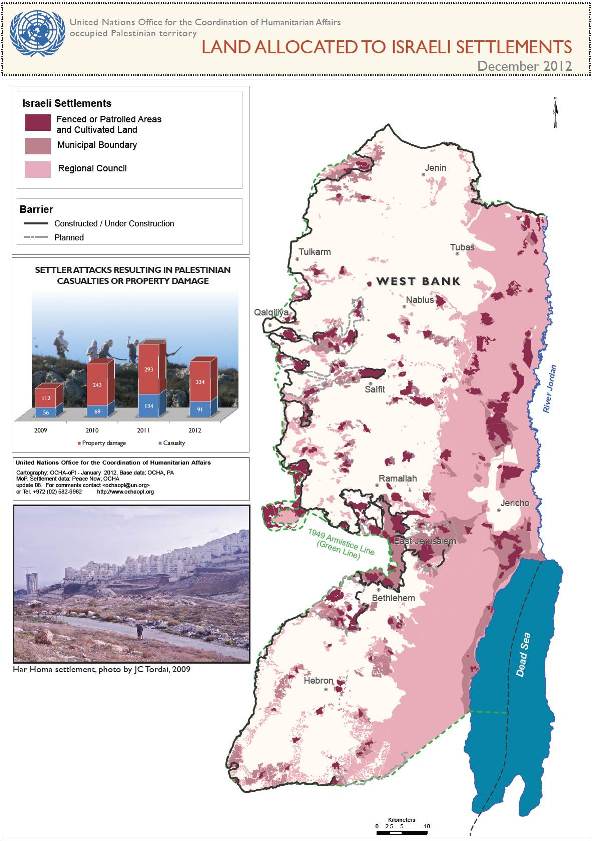The Office for the Coordination of Humanitarian Concerns in the Occupied Palestinian Territories (OCHA) has released a new report on the humanitarian impact of the Israeli settlement policy on Palestinians. Among its findings:
Key Facts:
- Since 1967, Israel has established about 150 settlements (residential and others) in the West Bank, including East Jerusalem; in addition to some 100 “outposts” erected by settlers without official authorization. Three new settlements were approved in 2012 by retroactively ‘authorizing’ such outposts.
- In 2011, the settler population was estimated at over 520,000; the annual average rate of growth during the past decade was 5.3% (excluding East Jerusalem), compared to 1.8% for the Israeli population as a whole (ICBS).
- Up to 28 November, there had been a threefold increase in the number of new settler housing units which were issued for tender in 2012, compared to 2011 (Peace Now); on 30 November, the Israeli authorities announced plans to build 3,000 new settlement units in East Jerusalem and the rest of the West Bank.
- The fenced or patrolled areas of settlements cover three percent of the West Bank; in total 43% of the West Bank is allocated to settlement local and regional councils.
- Virtually all of the land declared by Israel as public or “state land” (27% of the West Bank) has been allocated to settlements, rather than for the benefit of the local Palestinian population (B’Tselem).
- About one third of land within the outer limits of settlements is privately owned by Palestinians, according to official Israeli land records (Peace Now).
- In 2012, one Palestinian was killed and approximately 1,300 injured by Israeli settlers or security forces in incidents directly or indirectly related to settlements, including demonstrations.
- Only ten percent of 781 investigations conducted by Israeli police into incidents of settler violence between 2005 and 2011 resulted in indictments (Yesh Din).
- Approximately 540 internal checkpoints, roadblocks and other physical obstacles impede Palestinian movement within the West Bank; these obstacles exist primarily to protect settlers and facilitate their movement, including to and from Israel.
- The location of settlements was the major consideration behind the deviation of the Barrier’s route into the West Bank, including East Jerusalem; once complete, about 80% of the settler population will live in settlements located on the western (“Israeli”) side of the Barrier.
- Israeli settlers in the West Bank consume approximately six times the water used by Palestinians in the West Bank.

